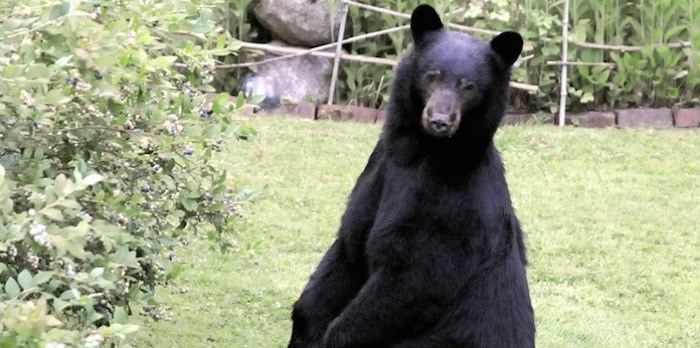A wildlife non-profit is calling for changes to how conflict with black bears is managed following a rising number of animals being put down by conservation officers across B.C.
A young bear was killed recently in , and three more in the Coquitlam area after coming into conflict with humans.
 Dog walkers are being asked to be cautious in Lynn Headwaters after a dachshund was attacked and killed by a young black bear Friday. file photo Mike Wakefield, North Shore News
Dog walkers are being asked to be cautious in Lynn Headwaters after a dachshund was attacked and killed by a young black bear Friday. file photo Mike Wakefield, North Shore News
“It’s time to recognize that if we keep doing the same thing over and over, all that will happen is bears will die,” says Michael Howie, spokesperson for The Fur-Bearers. “The Conservation Officer Service (COS) has killed bears as a first step for years."
There have been more than 160 bear complaints to the B.C. Conservation Service in Armstrong in just the past three years.
The organization says public comments on news stories about the euthanizing of bears point to a need for "co-existence solutions and prevention ... but the fear that officers will kill bears and other wildlife is preventing homeowners from accessing a frontline law enforcement agency."
“We know that attractants and inappropriate human behaviour are the leading cause for conflict with wildlife, yet through their funding structure and actions, conservation officers focus instead of killing bears rather than working with communities to make change,” Howie says.
“If the COS was focused on prevention and actual change, we’d expect to see fines and potentially charges every time they kill a bear. Instead, all we get is a dead bear and a shocked community.”
The Fur-Bearers urges three changes to government policy:
- That conservation officers be directed to show preventative measures, fines, and other educational tools are utilized prior to lethal measures and that third-party oversight be put into place.
- That funding be made available to municipalities to increase bylaw enforcement related to wildlife feeding and attractants.
- That both the RAPP line and bylaw enforcement departments begin accepting anonymous information regarding infractions that put wildlife and people at risk.
“We can’t kill our way out of these problems," says Howie.


